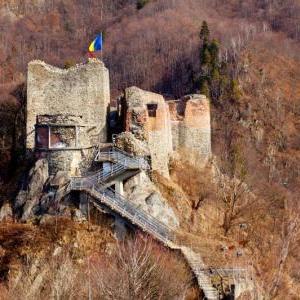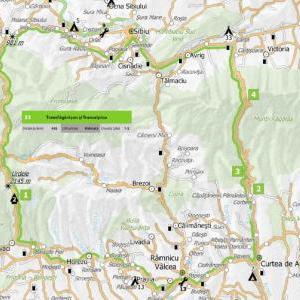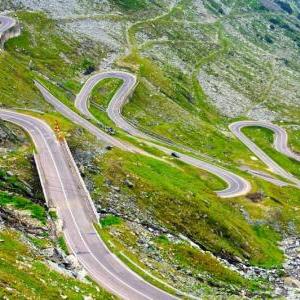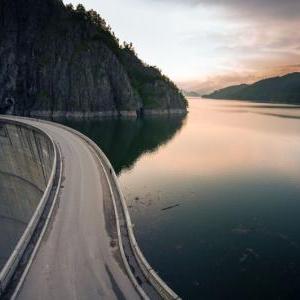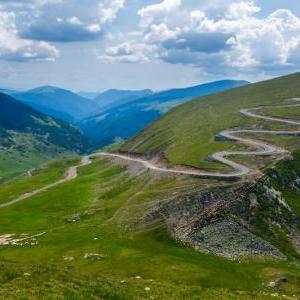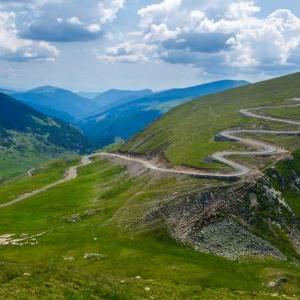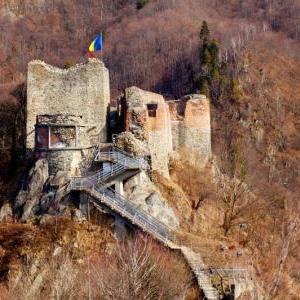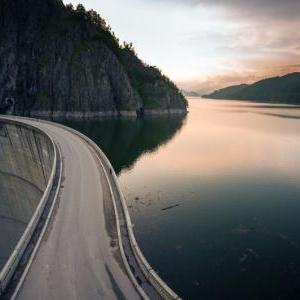The main attractions of this route are the most famous crossing passages of the Carpathian Mountains in Romania: Transfăgărăşanul and Transalpina. Each of these roads has a story and a charm of its own.
For the beginning, the circuit covers the region called Mărginimea Sibiului, an area culturally enclosed by the sheep herds over the pastures at the foot of Cindrel Mountains. After the villages of Jina and Poiana Sibiului the circuit goes into Valea Frumoasei at the village of Dobra. Road DN 67C, also called Transalpina will be the path followed for a good period of time.
For start, Lake Oaşa is reached, the largest from Valea Sebeşului. Immediately after the artificial lake, begins the ascension toward the first mountain pass of Transalpina’s roadway: Tătarau Pass. After lowering towards the resort Obârşia Lotrului, there comes a pronounced ascension toward the alpine area of the Parâng Mountains.
After the adventurous turns of the highest section of Transalpina, the circuit reaches the mountain resorts of Rânca and Novaci from the foot of the mountains. Transalpina has been rediscovered after the recent renovation from the year 2000. Initially, this route had been known only by the shepherds from Mărginimea Sibiului area, under the name of Devil’s Path. King Carol the 1st decided to build a military strategic road over the Devil’s Path. At the inauguration, the road has been transited by a “off-road” automobile driven by the king himself.
The circuit continues from Novaci towards the village of Baia de Fier and then on road DN 67 through Horezu, a renowned town for painted pottery. Râmnicu Vâlcea and Curtea de Argeş are the following cities on the way, where one can visit Mănăstirea Curtea de Argeş. The legend claims that this would be the church in which stonemason Manole build in his wife so the walls wouldnot crumble.
fter the town of Curtea de Argeş, begins the ascension of another already famous passage of the Carphatians: Transfăgărăşanul. In the first portion, the road climbs smoothly up to Vidraru’s hydroelectric plant, which is buried in the mountain. From this point, an ascent to Poienari Fortress could be done.
The road goes over the 307 m/336 yds long Vidraru Dam. Throughout Valea Capra, the circuit arrives at the tunnel that facilitatesthe access from under the ridge. At the other side of the tunnel, there is a touristic complex with numerous mountain cabins and restaurants, but also an impressive sight over the glacial U shaped valley. The road was built between 1970-1974, at the initiative of Nicolae Ceauşescu and 6520 tonnes of dynamite were used for its construction. Along its length, the route includes 830 bridges and 27 viaducts. These impressive constructions were not completed without victims. During the construction, 40 soldiers and workers died here. We recommended this route during the week to avoid the tourists.
Both mountain routes, Transalpina as well as Transfăgărăşanul are closed to the public during the winter season. The loop is completed by following the Valley of river Olt until just after the town of Avrig, then back towards the city of Sibiu.
Transfăgărăşanul and Transalpina
Distance
462.69 km
Uploaded
8 years ago
Updated
8 years ago
Transfagarasan Transalpina Lake Vidraru Poienari Fortress Historic Centre of Sibiu
